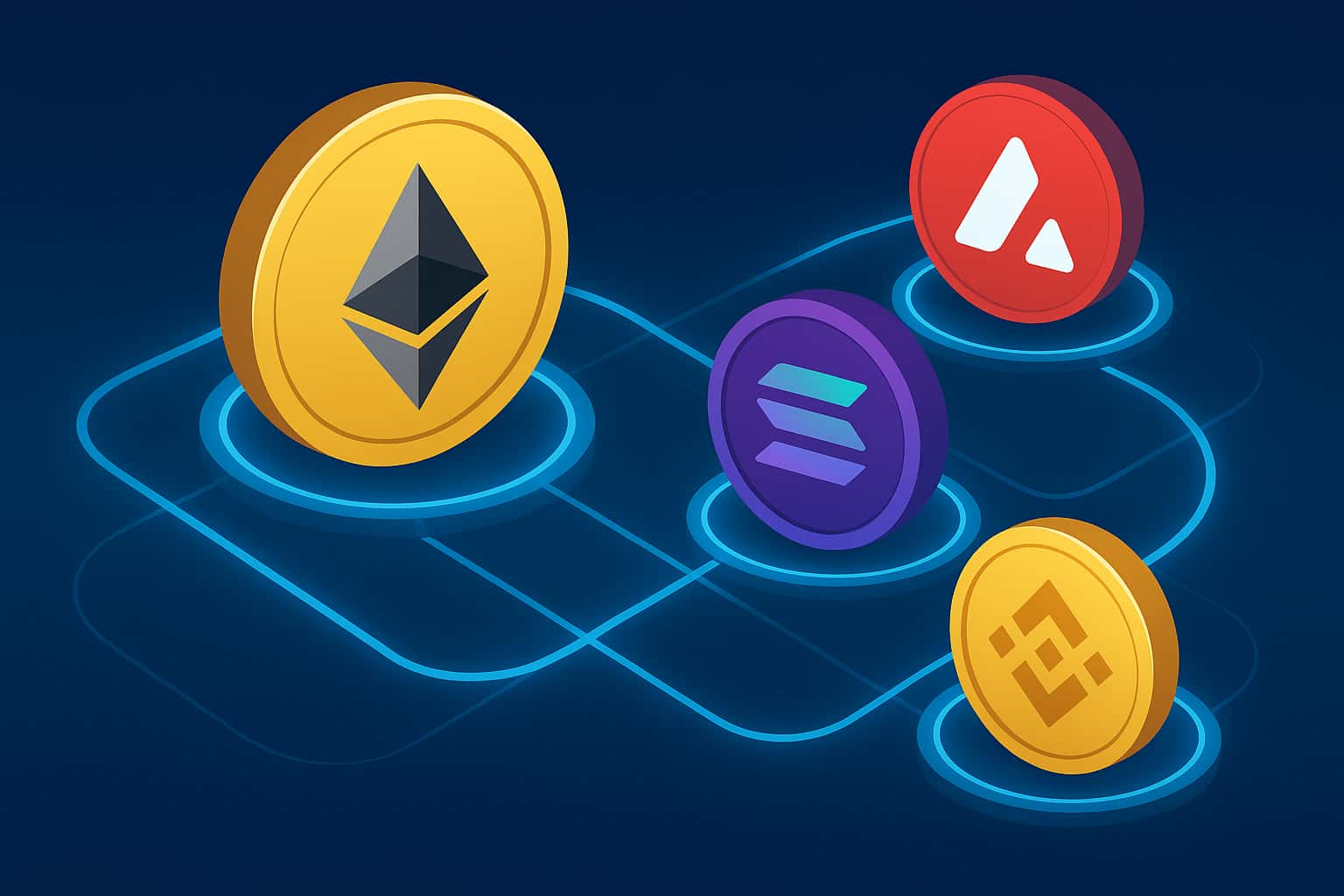| IBC (Cosmos) |
Channel-based message passing (ICS-20, ICA) |
On-chain light clients on each chain |
Cosmos SDK and IBC-enabled zones |
Production-proven across Cosmos |
Strong specs; needs relayers and setup |
Trust-minimized appchains and token flows |
Heavier for non-Cosmos; relayer ops |
| XCM (Polkadot) |
Cross-consensus message format and language |
Relay Chain validates and routes between parachains |
Polkadot and Kusama parachains |
Production, under active development |
Powerful instructions; steeper learning curve |
Parachain asset and program flows |
Mostly native to Polkadot ecosystems |
| CCIP (Chainlink) |
Message + token and programmable transfers |
DON + independent Risk Management Network |
Multiple EVM and non-EVM chains |
Active mainnets and enterprise focus |
Clear APIs, rate limits, USDC integrations |
Regulated and compliance-aware workflows |
Vendor network reliance and costs |
| Wormhole |
Generalized messaging with product suite |
Guardian network signs and attests messages |
Broad multichain coverage |
Widely integrated in production |
SDKs, explorers, Queries, NTT, Settlement |
GMP use cases and modular products |
Guardian assumptions drive security |
| LayerZero |
Omnichain messaging with modular security |
DVNs verify payloads; apps tune settings |
Many EVM and non-EVM chains |
Mature v2 stack and tooling |
Configurable libraries; flexible security |
Custom security profiles across chains |
Misconfiguration can weaken security |
| Hyperlane |
Permissionless interop; sovereign app control |
ISMs define app-level security modules |
AnyVM targets across L1s/L2s |
Open, growing deployments |
Deploy without core approval; open protocol |
Teams wanting control and fast rollout |
App assumes security and ops duties |
| CCTP (Circle) |
Native USDC burn-and-mint transfers |
Issuer attestation enables mint on destination |
Supported USDC chains |
Production; unifies USDC liquidity |
Simple flows; avoids wrapped USDC |
Canonical USDC movement between chains |
Only for USDC; policy constraints |
| EIP-5164 |
Standard interface for cross-chain execution |
Bridge-agnostic execution semantics |
EVM chains that implement the spec |
Spec available; adoption varies |
Familiar EVM patterns; vendor-neutral |
Bridge-agnostic EVM app messaging |
Limited to EVM; uneven support today |

 Blockchain Application Development
Blockchain Application Development
 Fintech Blockchain App Development
Fintech Blockchain App Development
 Hyperledger Application Development
Hyperledger Application Development
 STO Development Services Company
STO Development Services Company
 Exchange Development
Exchange Development
 Cryptocurrency Wallet Development
Cryptocurrency Wallet Development






